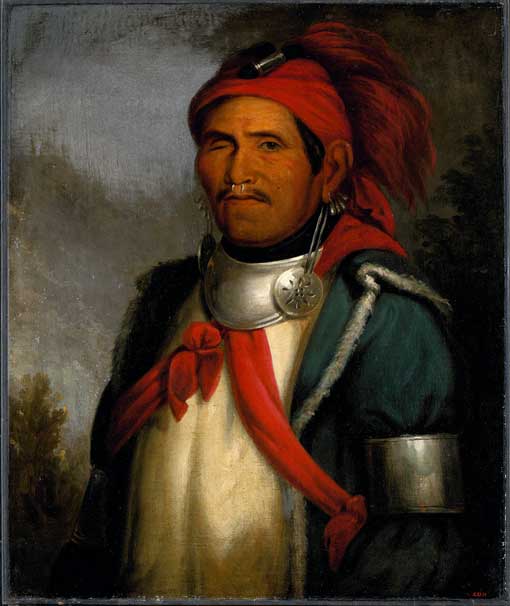Tenskwatawa (The Prophet) 1768–1837
Henry Inman (1801–1846), after Charles Bird King
Oil on canvas, c. 1830–33
National Portrait Gallery, Smithsonian Institution
Tenskwatawa, the most important Indian religious leader of this era, preached a return to traditional ways. Possessed with great oratorical skills, he built a large movement, and in 1808 he established Prophet’s Town in the Indiana Territory. He bitterly opposed territorial governor William Henry Harrison’s Treaty of Fort Wayne (1809), a dubious agreement in which some Indian chiefs ceded three million acres to the government.
Tenskwatawa denied that these chiefs had a legitimate claim to the lands and warned Harrison not to allow white settlement on them. Harrison surrounded Prophet’s Town, demanding the Indians disperse and hand over those guilty of frontier raids. Tenskwatawa attacked on November 7, 1811, promising his warriors that his powers would protect them. Each side in what became known as the Battle of Tippecanoe suffered heavy casualties, but the Indians left the field. Harrison burned down Prophet’s Town, claiming victory; Tenskwatawa was discredited and no longer led Indians into battle.

